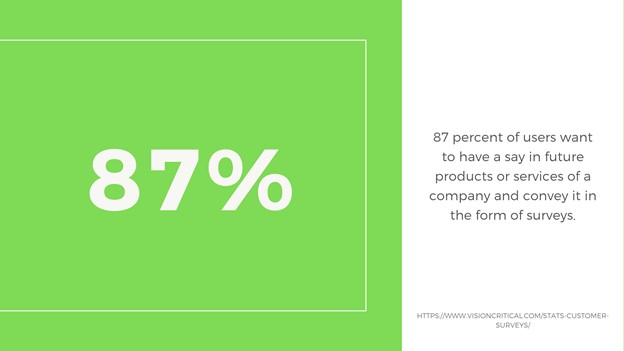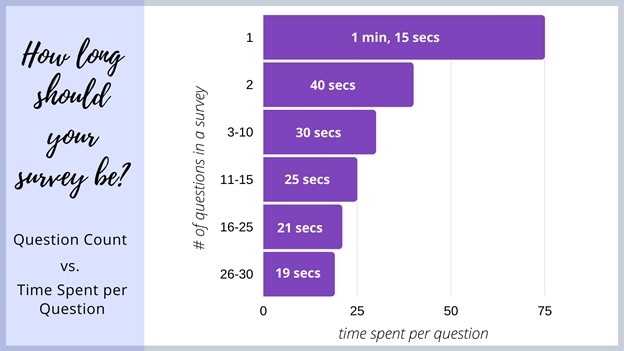Customer experience is the No.1 priority of businesses today. And it's no wonder: Companies that invest in their customer experience program outperform those that don't by nearly 80%, according to a 2019 Forrester study.
That's s a paradigm shift from the old way of doing business. It's no longer enough to just provide a product or service that customers want to buy. You also have to make sure your customers have the best experience while buying it. It's what sets you apart from your competitors and ensures you draw in new customers as well as retain them.
Companies that have outstanding customer experience programs begin by analyzing customer feedback, according to research by Gartner. That feedback can be collected in multiple ways including Web forms, surveys, and Net Promoter Score (NPS) programs.

What Is a Customer Survey?
A customer survey, as the name suggests, is a set of questions you can ask your customers and prospects to obtain their feedback. It could be related to the product or service you are selling, the sales medium, or your own website.
A good digital customer experience is facilitated by giving customers what they need and simplifying their journey through the sales funnel. Surveys take the guesswork out of what works and what doesn't.
The purpose of surveys is to find the reasons behind customers' decisions. That's why customer surveys don't ask questions regarding location, or the customer's age or gender. You want to find out only what issues a prospect is facing and how your product or service can help solve that particular issue.
How can customer surveys affect business by boosting lead conversion? Read on to find out.
Four Ways to Boost Lead Conversion With Customer Surveys
1. Identify what you want to find out
This may seem like an obvious first step to writing a customer survey, but businesses often get so preoccupied with the technical nitty-gritty of process that they lose sight of problem-solving. To get the most value from surveys, you need to set clear goals about what it is that you want to achieve—for example, why customers are choosing your product over your competitors'.
It's also important that you keep questions as short and simple as possible to avoid confusing customers, and that you ask one question at a time. For example, instead of asking, "Why did you choose this product, and how does it solve your problem?" break the question up into two separate questions. That way the customer can focus on one issue at a time and provide more focused feedback.
Focused feedback makes it more likely that you'll identify potential pain points and improve your conversion rate optimization (CRO).

2. Set a sample size
The effectiveness of surveys depends in large part on how they are rolled out, and for how long. It's good practice to get around 200 responses to a survey before changing the questions or removing it altogether. That's important because you need a certain mass of data before you can accurately derive trends from it through analysis.

However, sometimes a business can't get 200 responses because it has low traffic or it's new on the market.
What's more, some businesses are skeptical about surveys because they're either worried about seeming too intrusive or they're afraid of getting answers they won't like. However, getting brutally honest feedback is incredibly important, and negative reviews tell you exactly which areas need to be fixed.
The more responses you get, the easier it is to spot what's turning people off. Armed with those insights and proactive customer support and sales teams, you are more likely to fix issues and directly boost your lead conversion.
3. Conduct surveys in real-time
Surveys conducted in real-time are ideal for boosting CRO. They allow customers to give feedback while they're actively engaged with the company, which facilitates conversions on the website.
For example, when a prospect attempts to leave a page before clicking the "Buy Now" CTA, you can present a feedback survey to understand the reason for the purchase abandonment. After the prospect fills in the survey, you know right away whether it was a technical glitch or unsatisfactory product images or something else that influenced the decision to leave.
Real-time surveys have another big advantage: Even after leaving your website, a customer becomes a potential lead by submitting contact details. Your sales teams can use that data to make up for any negative experiences and help convert leads on your website.
The right digital analytics tools allow you to set up notifications that send preset alerts to your team. That cuts down on overall response time and highlights any recurring problems on your website, which in turn lets you fix the issues before your customers spot them.
By resolving customer crises in real-time, you can win back lost customers and boost CRO.
4. Ask the right follow-up questions
A survey is not just a list of unrelated questions. It aims to understand the motivations behind customer behavior and decision-making. Asking relevant follow-up questions can provide a better understanding of a customer's reasoning.
For example, if your survey asks, "Did you achieve your goal?" and the customer chooses "No," a logical follow-up question would be, "What was the reason you could not achieve your goal?"
The survey could have preset multiple-choice replies, or you could include a blank field for customers to explain exactly why they couldn't get what they needed. That way you will receive a specific answer to your question; then, using that feedback, you can identify the root cause of the issue and try to fix it.
Asking follow-up questions and giving customers the chance to voice their concerns or complaints is a great way to show your commitment to your customers' needs. It's considered one of the tried and true customer service best-practices, and it boosts customer satisfaction, which in turn increases conversions.
* * *
Customer surveys are a great cost-effective way of engaging with customers and using the insights from those engagements to troubleshoot pain points. Surveys let you fix errors, and if used correctly they can lead to increased conversions.
That said, although conversions are fantastic, they're not the most valuable result of an effective customer survey. Truly knowing who your customer is and what makes them tick is the principal reason for surveys because they can lead to enhanced loyalty to your company.
More Resources on Customer Surveys
How to Create and Publish Survey-Based Research for Your Marketing | MarketingProfs Webinar
Six Tips for Creating an Effective Online Customer Survey
Are Surveys Dead? Five Ways to Breathe New Life Into Your Customer Research




